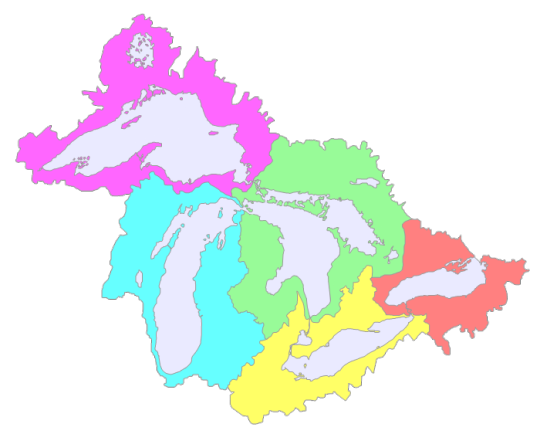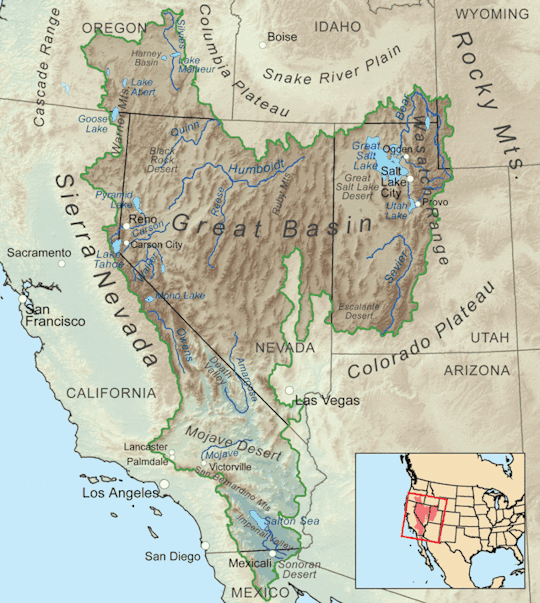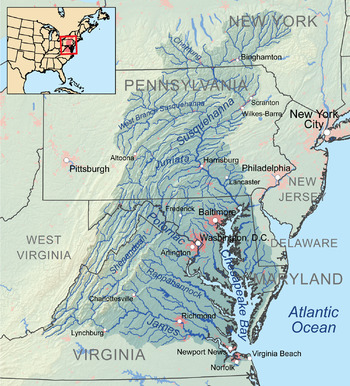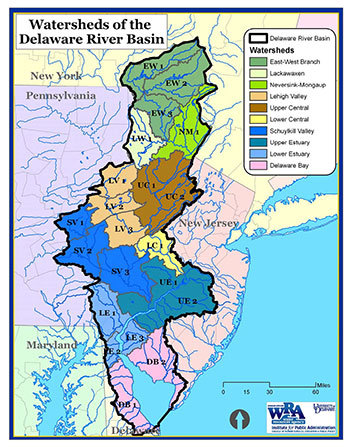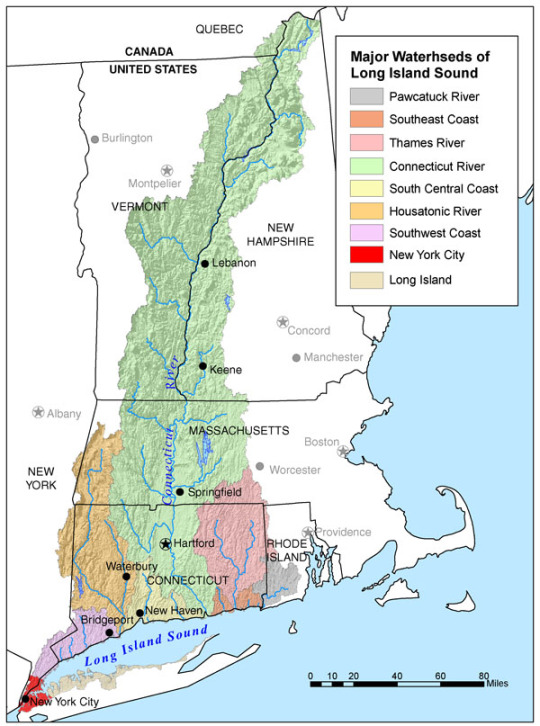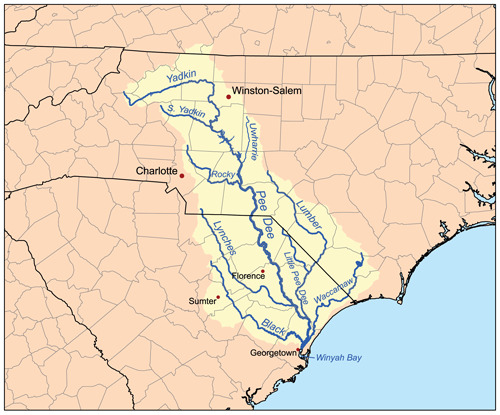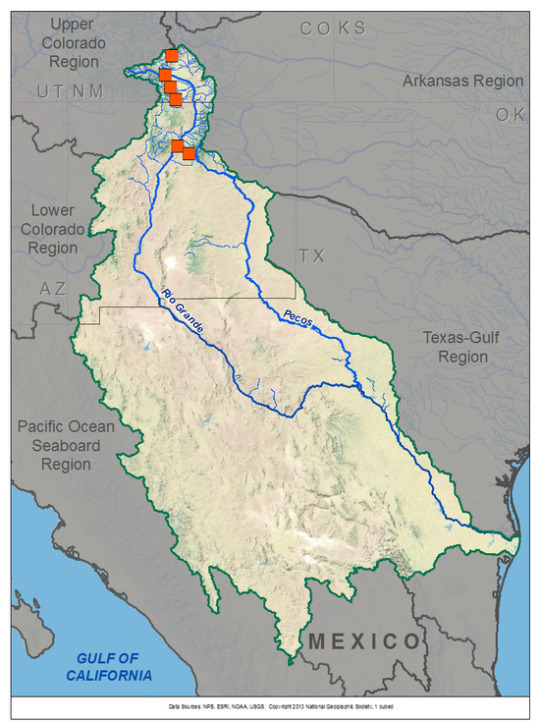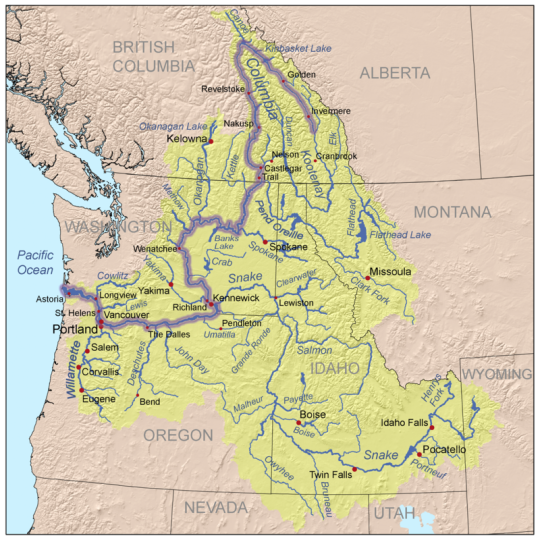#Columbia river basin
Explore tagged Tumblr posts
Text
The Biden administration agreed Thursday to spend more than $200 million to fully fund Native tribes’ plans to reintroduce salmon in the upper Columbia River basin — more than 80 years after construction of the Grand Coulee Dam rendered the fish extinct in parts of Washington, Idaho and British Columbia.
The unprecedented show of federal support is a course correction from the previous efforts of some federal agencies to resist tribal salmon restoration, which were documented in an August 2022 investigation by Oregon Public Broadcasting and ProPublica.
“This agreement is the start of fixing a wrong,” Greg Abrahamson, chair of the Spokane Tribe of Indians, said during the announcement of the agreement. “Grand Coulee Dam allowed the desert to bloom, and many faraway cities enjoyed the cheap electricity it produces, at my people’s expense.”
The announcement is also a recognition of the federal government’s long-standing violations of the fishing rights of sovereign tribes, some of whom have signed treaties with the U.S. government. Construction of Grand Coulee Dam destroyed the Columbia River fishing site of Kettle Falls, a regional trading hub and sacred site for many salmon-dependent tribes. It cut off hundreds of miles of river habitat for salmon, who migrate to the ocean as young fish and return to their home waters to spawn as adults. Salmon and other oceangoing fish once accounted for an estimated 60% of the historic diet for Northwest Indigenous people. After the construction of Grand Coulee and other dams in the upper Columbia basin, those fish disappeared.
After nearly 80 years without those fish, a coalition of tribes along the upper Columbia River developed in 2015 a multiphase plan to reintroduce salmon into areas where they’d been blocked.
The tribes’ long-term plan involves building hatcheries, releasing fish into waters above Grand Coulee, tracking their migration and developing plans to pass fish safely around the dams through techniques like trapping them and trucking them up or downstream. They designed the plan to ensure it does not interfere with hydropower generation at the federal government’s biggest dam on the Columbia.
32 notes
·
View notes
Text
#earthjustice#earth justice#environmental justice#salmon#columbia river basin#columbia river#snake river#us politics#indigenous rights#colonialism#personal
2 notes
·
View notes
Text
Portland, again!

View On WordPress
#Astoria OR#Blue Strait#Clara Jost#Columbia River Basin#Mt Hood#Newport OR#Port Angeles WA#Portland#Seattle#The Bed You Sleep In#Tourists#Vancouver BC
0 notes
Text
youtube
#youtube#news#Columbia River Treaty#Transboundary Cooperation#Treaty Negotiations#US State Department#Historic Announcement#Shared Resources#Blinken#Columbia River Basin#Columbia River Gorge#Indigenous Rights#Environmental Conservation#International Relations#Diplomacy#Pacific Northwest#Columbia River#US-Canada Relations#Canada Foreign Ministry#Water Management#Joly#Hydroelectric Power
0 notes
Text
https://ictnews.org/news/condors-are-coming-back-to-the-pacific-northwest
#condors#pacific northwest#nez perce#Columbia river basin#snake river basin#Hells Canyon#Nimiipuu#the canyon where condors nested#Vultures of the Columbia
1 note
·
View note
Text
In the 1930s, the US put lots of dams along the Columbia River to provide power and prevent flooding. As a side effect, it destroyed the salmon populations of the upper Columbia River and its tributaries, because salmon have to be able to migrate out to the ocean and back. (They live most of their lives in the ocean, but come upriver to spawn.) The local tribes have been trying to figure out a way of restoring salmon habitat ever since.
The Biden administration just committed $26 million to build infrastructure that will allow fish to bypass dams, and also help with the tribal studies on the best way to reintroduce salmon to the area. And the programs they've agreed to fund were developed by the tribes, so native voices will have a strong say.
4K notes
·
View notes
Text

Title text: Washington state is seeing great success with reintroducing the Columbia River Basin subpopulation. We cannot allow them to further widen the interstate bun gap.
237 notes
·
View notes
Text
A mother doe, flanked by a fawn still in spots, bounds through belly-deep sage at the foot of Lalíik, colonially known as Rattlesnake Mountain. At 3,600 feet, Lalíik is the tallest treeless mountain in the Lower 48. For thousands of years, it’s been a place of ceremony and sustenance for families now enrolled with the Nez Perce Tribe, the Wanapum Band of Priest Rapids, the Confederated Tribes and Bands of the Yakama Nation and the Confederated Tribes of the Umatilla Indian Reservation. “For whatever reason, people try to shorten our time in this land,” said Emily Washines (Yakama), board president of the environmental nonprofit Columbia Riverkeeper. “They say, ‘Well, you weren’t here when the Missoula floods happened.’ And we know that we were here because that’s the mountain that we went to when there was water.” Lalíik means “land above the water” in Ichishkíin.
The mountain presides over an elbow of the mid-Columbia River in Washington, where today the basin’s largest remaining population of fall chinook salmon spawn. The landscape is largely intact and sheltered from development — but not because of environmental laws, conservation groups or Indigenous management. It has been closed off since 1943, when the occupying government seized 580 square miles and, in a matter of months, built experimental war machines that poisoned the ground so badly it’s now the most contaminated nuclear site in the Western Hemisphere. This is the Hanford site.
[Continue Reading]
83 notes
·
View notes
Text

Excerpt from this story from Indiginews:
For the first time in known recent history, a lone adult Okanagan summer chinook salmon successfully made its way home to kɬúsx̌nítkw (Okanagan Lake) from the ocean last week.
The fish’s roughly 1,000-kilometre migration marks a “big milestone” for the syilx Okanagan Nation’s efforts to restore the species to one of its former habitats, the Okanagan Nation Alliance (ONA) proclaimed in a Facebook post last Wednesday — a day after its scientists spotted the lone fish.
ONA fisheries biologist Elinor McGrath told IndigiNews that the five-year-old fish had been raised at the kł cp̓əlk̓ stim̓ hatchery before making its migration journey — from the Okanagan Basin to the Pacific Ocean and back.
She said the event has buoyed longstanding hopes to re-populate the area with chinook. For many years, she said, the vast majority of migrating fish could only reach just north of “Oliver” because of dams and other blockages.
“You really do realize that you’re achieving something,” McGrath said. “Hopefully, this is just the start of many more things to come.”
The hatchery was built 10 years ago to help restore the historical range and population of salmon throughout the Okanagan watershed — including into the 135-kilometre-long kɬúsx̌nítkʷ — and parts of the Columbia River Basin.
The project is part of the Okanagan Chinook Restoration Program, which has released tens of thousands of juvenile chinook into local waterways since 2017. But ONA’s proposals to restore chinook to their historic habitats date back to 1997.
37 notes
·
View notes
Text
Fish of the Day
Today’s fish of the day is the westslope cutthroat trout!

The westslope cutthroat trout, also known by scientific name Oncorhynchus lewisi is a common freshwater salmonid. Known by many names, this fish is one of the four living subspecies of cutthroat trout remaining, and the westslope is sometimes considered to have its own subspecies, as separated by major populations in differing rivers and lakes. Within their range, they tend to settle in rivers that contain more pools and vegetation cover, similar to other freshwater trout. Found across the Pacific Northwest, the westslope cutthroat trout is the Montana state fish, living in the lower areas of British Columbia, Alberta, Wahsington, Oregon, Idaho, and, of course, Montana. Primarily found within the Columbia basin and upper Missouri river basin, with historical ranges stretching far further North, South, and West, but now is only a shadow of its former size. This is due to the aggressive spread of other salmonid trout species, such as the brown trout and rainbow trout, which are non native in the areas and introduced by hobby fishers.

The name of cutthroat seems relatively straightforward, considering these fish are well known for teeth lining: the roof of the mouth, underside of the tongue, and clusters in the front of the mouth. This is in fact misleading. The name of cutthroat was given to these fish due to the distinctive red coloring to the lower jaw of the fish. Despite these many teeth, the cutthroat usually subsists on a diet of insects and their larvae, along with a healthy amount of zooplankton, and algaes. The westslope cutthroat in particular can grow to sizes of 6-12 inches, with few weighing more than 5 pounds. This is significantly smaller than most other inland cutthroat trout, which reach sizes of up to 39 inches at a maximum.

The life cycle and reproduction of the westslope cutthroat is the same as many other salmonids, migratory. cutthroat trout in particular though, especially landlocked ones such as the westslope have three different life strategies—stream resident, adfluvial, and fluvial. Stream resident fish are the ones living within river tributaries, never migrating to a fully different area, just to breeding grounds where the water is clear, clean, and oxygenated. Adfluvial fish live in larger lakes, and migrate down into river tributaries to lay eggs in areas of lower predation. Finally, fluvial fish migrate from larger rivers and basins into tributaries, just like the other trout. This all takes place in their breeding season in the spring, triggered by temperature change, as it begins as soon as the water temperatures regularly reach 50 degrees Fahrenheit. Female cutthroats can lay anywhere between 200-4,000 eggs a season, and after fertilization will hatch within a month into fry. Once they reach an age of 3-5 depending on subspecies the fish will begin doing migrations with others of their species to the same breeding grounds they were born in. The fish can live to reach as old as ten years of age, and survive through multiple breeding seasons, ushering in theoretically thousands of offspring in their life.

That's the westslope cutthroat trout, everybody! Have a wonderful day!
#fish#fish of the day#fishblr#fishposting#aquatic biology#marine biology#freshwater#freshwater fish#animal facts#animal#animals#fishes#informative#education#aquatic#aquatic life#nature#river#ocean#trout#cutthroat trout#westslope cutthroat trout#Oncorhynchus lewisi
28 notes
·
View notes
Text
First Nations groups on the Canadian side of the Columbia River Basin are adamant that salmon runs that have long been blocked by dams in the United States must be restored, potentially in a renewed river treaty between the two countries. But experts say possible solutions, such as “salmon cannons” that suck fish through a pipe and shoot them out upstream and over obstacles, are all costly and potentially limited in their effectiveness. Representatives from the Ktunaxa and Syilx Okanagan nations say they continue to bring up salmon restoration in negotiations for a modern Columbia River Treaty and will not stop until a solution can be reached within or outside a new agreement. The U.S.-Canada treaty regulates the cross-border Columbia River to prevent flooding and generate hydro power. A key component of the 62-year-old treaty is set to expire in September 2024, lending urgency to the ongoing talks.
Continue Reading.
Tagging: @politicsofcanada
116 notes
·
View notes
Text










Arapaima gigas, also known as the pirarucu, the giant arapaima, or simply the arapaima, is a species of large fish which along with the Slender arapaima, Agassiz's arapaima, and Mapa arapaima make up the genus arapaima. They are native to the rivers, wetlands, and lakes throughout Bolivia, Brazil, Columbia, Guyana and Peru and have also been introduced throughout Thailand, Malaysia, and India as food/ sport fish. The arapaima is an air breather, which uses its labyrinth organ, to gulp air and absorb surface oxygen. Giving the fish advantage in oxygen-deprived water that is common in the Amazon River Basin. They are omnivorous animals which feed upon fish, crustaceans, fruits, seeds, insects, amphibians, reptiles, birds, and small mammals. Reaching around 6.6 to 10.1ft (2 to 3.07m) in length and 110 to 440lbs (50 to 200kgs) in weight, the giant arapaima is amongst the largest freshwater fish on earth. They sport flattened heads, torpedo-shaped bodies, with large, blackish-green scales and red markings. It is streamlined and sleek, with its dorsal and anal fins set near its tail. Arapaima scales have a mineralised, hard, outer layer with a corrugated surface under which lie several layers of collagen fibres in a Bouligand-type arrangement, which forms a structure which has the ability to flex and deform while providing strength and protection, thus allowing the fish to be both mobile and heavily armored. Spawning occurs in lakes and river channels during the time of low water levels (August to March). After the young hatch from eggs laid in a nest constructed by both parents, the eggs hatch and are cared for by there father who broods them in his mouth for around 3 months. The mother in turn helps to care and protect said father. Under ideal conditions a giant arapaima will reach sexual maturity at an age of four to five years; and may live upwards of 20.
#pleistocene pride#pliestocene pride#arapaima#fish#marine life#aquarium#freshwater#fishing#amazon#south america#animal#facts
13 notes
·
View notes
Text
choirgirl, pele, scarlet
okay but every time I listen to it I realize that From the Choirgirl Hotel is maybe one of the more perfect albums I've ever heard??? It is the literal definition of 10/10 no skips every song is a banger even the bonus tracks are fucking flawless
the production is the most lush and complex Tori has ever put out
it's wild to me because I've always loved this album but I kind of slept on it sort of? "Playboy Mommy" was hitting me HARD when it came out and I was 19 and I'd just had an abortion. The album was associated with the literal worst year of my fucking life. So I think I kept a distance from it for that reason. "Boys For Pele" was the album that came out when I got SUPER into Tori. I'd liked her since Silent All These Years came on MTV as a buzzclip, and loved her collaboration with Trent Reznor on Under the Pink, but Pele got me OBSESSED as I was a senior in high school. I had just broken up with my first boyfriend, too, after a 2 year relationship and Pele is a breakup album so it just. RESONATED. And all the things that the very stupid critics hated about Pele: how baroque it was, how long it was, how insane Tori sounded in several of the songs, how impenetrable and whimsical the lyrics were in comparison to Little Earthquakes and Under the pink. These were the things I LOVED about Boys For Pele.
That tour was also the first time I saw her in concert (the first of eight over the years) and it was a MAGICAL EXPERIENCE. She had toured around Florida, but, being 17, me and my friend Melissa weren't able to drive several hours to Tampa or Orlando or Miami, because, parents. A lot of our friends had been able and we were ENVIOUS. We complained one day in AP English to each other that Tori was not coming to Fort Myers, which was a mere 40 minutes away, an easy and parent-allowed drive. Later that afternoon, after school, Melissa called me up sounding !!!! and told me that 1) TORI HAD ADDED A FORT MYERS SHOW, WHAT?? and 2) she had heard this because she was listening to the radio and they were giving 2 tickets to the tenth caller and MELISSA WAS THE TENTH CALLER, WE WERE GOING TO SEE TORI. It was like the only time in my entire life that I made an improbable wish and it IMMEDIATELY came true within 24 hours. That concert IMPRINTED on me.
Tori Amos was listed the #3 live performer of all time by Rolling Stone at some point, and I don't think that's an unfair assessment. There is an absolute witchcraft that woman practices onstage. She grabs the audience by the throat and does not let go until the encore is over. Which is why I keep going back to her shows whenever I can. My eight shows are nothing to the people who follow her around and get promoted to front row seats by Tori's team (my ultimate fan wish that I know will never come true, QQ), but for me, a Real Life Poor, it's a LOT. When I'm at her shows, I feel like there's no one else there but me and her (and the band if she's touring with them).
When I was 24, I had another big breakup, and moved across the country, from Lynchburg, Virginia to Portland, Oregon. I took a train ride to do so, it was a five day groggy sightseeing tour across the United States. Scarlet's Walk was in my portable CD player as I sleepily alternated between the sightseeing car (I could not sleep, I could not afford a sleeping car and I can't sleep in public in a chair. I was DELIRIOUS) and the smoking car (I was still a pack a day back then. it was 2004) and Scarlet's Walk, being a literal road trip across America, fraught with all the relationship angst that is Tori's signature, and the political anxiety building in that album post-9/11 was just... incredible for this train trip. I saw America at its most beautiful (the snow-covered mountains and lush greenery and waterfalls of the Pacific Northwest, specifically the Columbia River Basin, looking like Eden itself) and at it's most depressing and ugly (that was Toledo, Ohio. Holy shit it was like ... decayed industry and garbage everywhere. DEPRESSING).
I watched a drunk cougar in the smoking car crawl all over an 18 year old kid who was about to be shipped off to Iraq, purring in his ear that she was also eager to serve her country to this album. I smoked weed and did shots of Grey Goose with this chick in her sleeping car to this album. I sat in the sightseeing car and paused the album only once, this late night when some guy with a guitar and a bottle of whiskey attracted a crowd as he randomly played classic American songs the crowd mostly knew the words to at request, and everyone sang along. I felt like I was having some sort of transcendent American experience on this train trip, and Scarlet's Walk, an audio trip across the country, was my soundtrack. My mom road tripped to Simon & Garfunkel in the late '60s with her friends, I road tripped to Tori. And the ten years I lived in Portland after that train trip remain the most cherished and happy of my entire life. Those were the really great years.
So Scarlet became the favorite of my adult life.
Now I'm revisiting From the Choirgirl Hotel with the distance of two and a half decades, as some old vinyl collecting music nerd who has become re-obsessed with 90s-style trip-hop and industrial, and I'm just in awe of the quality of the music of Choirgirl. Like I said: flawless from beginning to end. It's an emotionally traumatic album even without personal context, though, given the subject matter, but it is perhaps the most perfect front-to-end album Tori's ever put out.
9 notes
·
View notes
Text
Angela Sondenaa was jet-boating up the Snake River through Hells Canyon. Looking at the steep cliffs and rocky crags, an idea struck her: “Man, there needs to be condors here,” she recalls thinking. It was 2015 and Sondenaa—the Nez Perce Tribe’s Precious Lands Wildlife Area project leader—was surveying for bighorn sheep. She’d never considered the idea of bringing condors back to the Columbia River Basin, but once it hit her, she says, “This idea would not leave me.” Sondenaa pitched her idea to the tribe’s wildlife director, and they submitted a grant proposal to the U.S. Fish and Wildlife Service to conduct a condor viability assessment in the Snake River Basin. Winning the grant in 2016 put the Nez Perce Tribe—or Nimíipuu—on a path that could lead to the first reintroduction of condors north of California since they disappeared from this region about 160 years ago. If all continues to go well, the tribe will release their first group of captive-raised birds in a yet-to-be-determined location within five to seven years.
#california condor#rewilding#species reintroduction#ecological restoration#ecology#endangered species#wildlife conservation#pacific northwest
21 notes
·
View notes
Text


The Snake River at Adrian, Oregon
What my photos don't show are the thousands of acres of irrigated farmland on both sides of the river, growing hops, wheat, onions, etc.
"About 1,080 miles (1,740 km) long, it is the largest tributary of the Columbia River, which is the largest North American river that empties into the Pacific Ocean."
"Beginning in Yellowstone National Park, western Wyoming, it flows across the arid Snake River Plain of southern Idaho, the rugged Hells Canyon on the borders of Idaho, Oregon and Washington, and finally the rolling Palouse Hills of southeast Washington."
"It joins the Columbia River just downstream from the Tri-Cities, Washington, in the southern Columbia Basin." [X]
8 notes
·
View notes

